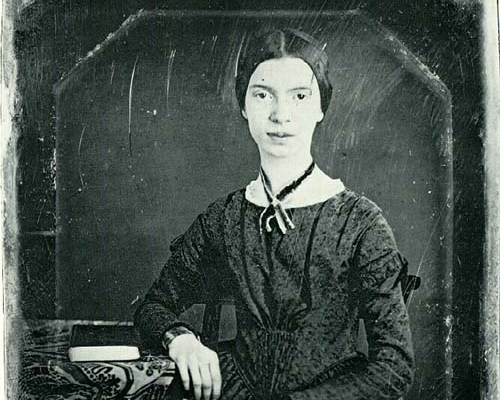The poem is a short proclamatory lyric of two quartets written in alternative iambic tetrameter and iambic trimeter, known as the common meter. There are two kinds of rhyme scheme present in the poem, the first quarter has the perfect end rhyme pattern of ABAB type, following with an alternate rhyme pattern of CBDB type. Like most of Dickinson’s traditional hymns, this short poem too is written in Dickinson’s characteristic style, in common meter, enabling Dickinson to convey her idea with simplicity. Dickinson avoided the generic use of pentameter or hexameter and resorted to the use of tetrameter or trimeter, even dimeter. This was done in opposition to an age of reason poetry being done overseas and Dickinson believed that through the personal only one can grasp the notion of the overall.
This is My Letter to The World Analysis
There are several literary devices employed by Dickinson in this concise poem of hers, where she is like the petitioner in the court of the world, offering herself as a subject of judgment. The solemn tone of the poem reflects the loneliness and seclusion with which Dickinson spent her life. She uses the image of a proclaiming letter which is the proof of lack of reciprocation of her work. Her poems and the meaning within them are like a letter which conveys the most innermost and coveted thoughts of a person. Nature here is personified as a Muse or mode of inspiration and is portrayed in an abstract image devoid of definitive form. Dickinson writes in epigrams, which are supposedly contradictory and have juxtaposed images in them, for example, “tender majesty”.
Although in order to access a work of literature, the work has to be considered out of the context of its creator’s perspective, this poem is strikingly resemblant of Dickinson’s own short-lived literary career where only dozens of poems were published out of the 1,800 that were created by her during her lifetime. Even fewer of her poems were well received and understood. In the age of experimentalisation, while fighting the war against the atrocities of an age of reason across the Atlantic, her personal sublime ideals were lost into oblivion.
This poem too was published in 1866, four years after it had been penned down by Dickinson, that too after being heavily altered by Higginson, the person who followed her work closely and helped in publishing her works. Throughout her life, all of her works were heavily altered and she never really lived to see the fame and recognition that she deserved. Her talent too, like herself, was shielded from exposure in seclusion. This image of invisibility from the common gaze is portrayed in this poem, where the narrator is leaving her legacy in hands of invisible readers, who she hopes will do justice to it. Her readers are the actual successors of her work and it is vital that they conceive of the world through her ideals, at least try to, otherwise, all her toil would have been a Sisyphean task.
Dickinson’s usage of punctuations have been of particular interest to 20th-century scholars, for the whole meanings of her poems have said to be changed with the slight change in the punctuations. In this poem to, we can observe ample usage of such manner. In the end of the second line in the first stanza, we see a dash (‘-’) has been used immediately after a given comma which is indicative of the space that has developed between the apparent and the real. It can also signify the distance which Dickinson kept from the outer world. But the purpose of the punctuation extends where the abstract form of the nature fuses with her personal identity and the message of nature is now hers too. This image of being united with nature and turning into a singular identity has been shown through the simplicity of the poem, which almost looks like, is trying to uncomplicate the vanities of life through its simple yet somber outlook.
The news which she talks of in the first stanza can have dual meaning– living in seclusion, Dickinson had grown close to the nature, but her perception of it was both romantic and melancholic; while the mysticism of nature conveys several intricate truth about life and loss, the continual natural process of the conception of the living from death conveys the immortality of life over the survival of the self. The “ simple news which she conveys can be the uncomplicated nature of death, whom she saw as a suitor in the
“Haunted house” of nature. She describes this nature with a “ tender majesty” which shows us the dual form of nature, the calm and nurturing side along with its grand destructive form.
Of the several doctrines that the Man employs in order to ensure the survival of his identity after his death, the one which all artists use to ensure their legacy is survival through their creation of art. Dickinson too hopes to avoid oblivion by transgressing mortal boundaries and entrusting her works to the coming future. Through this, she can also ensure that the future holds a better understanding of the mysteries of nature and death than her contemporaries ever did.
Dickinson knows very well, that the less exposed malevolent side of nature is often overlooked by all, and that the single dimension of common perception only presents the nurturing side of it, which all tend to care and adore for. For the sake of that love for the personified ever-glorious Nature, the narrator proclaims sympathy of her gentle onlookers, to whom she pleads her case. The nineteenth-century American poetry saw a lot of experimentalisation and radical ideas which were not well-received always, Dickinson too had faced such mail reception and is hoping to make amends for that. Through the considerate judgment of her, she also asks her readers to judge the nature with such tenderness and adapt to reform and no longer conform.
Some online learning platforms provide certifications, while others are designed to simply grow your skills in your personal and professional life. Including Masterclass and Coursera, here are our recommendations for the best online learning platforms you can sign up for today.
The 7 Best Online Learning Platforms of 2022
- Best Overall: Coursera
- Best for Niche Topics: Udemy
- Best for Creative Fields: Skillshare
- Best for Celebrity Lessons: MasterClass
- Best for STEM: EdX
- Best for Career Building: Udacity
- Best for Data Learning: Pluralsight















